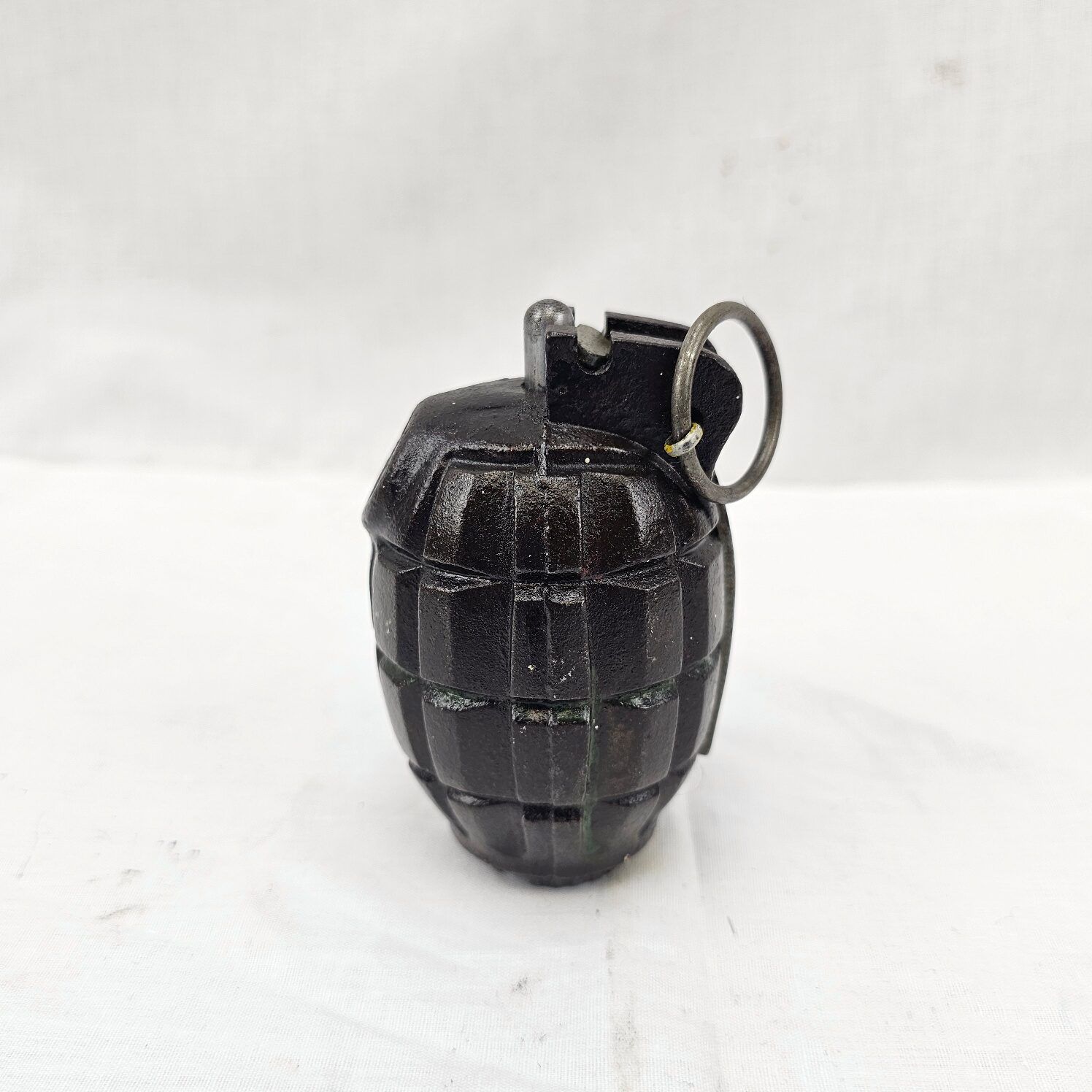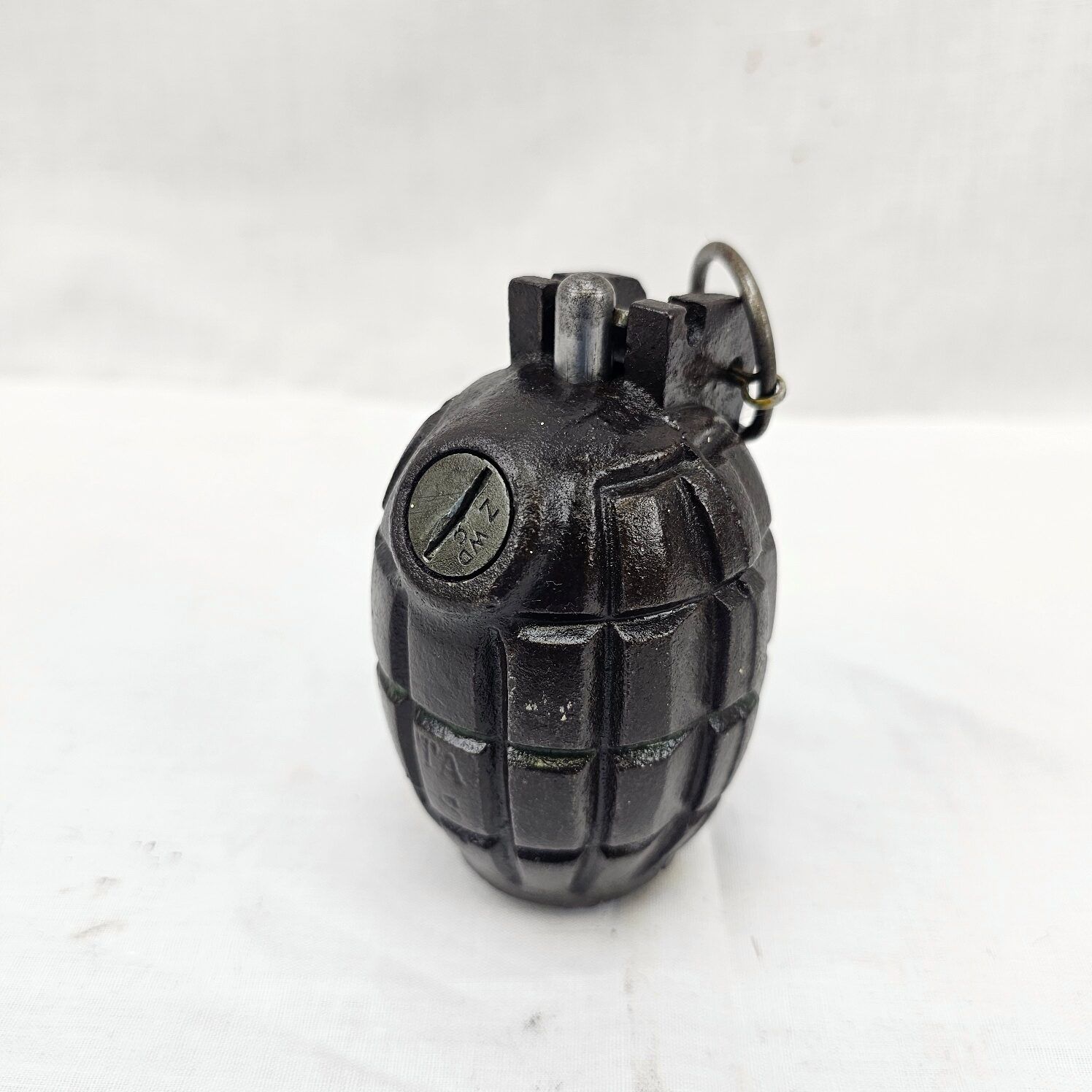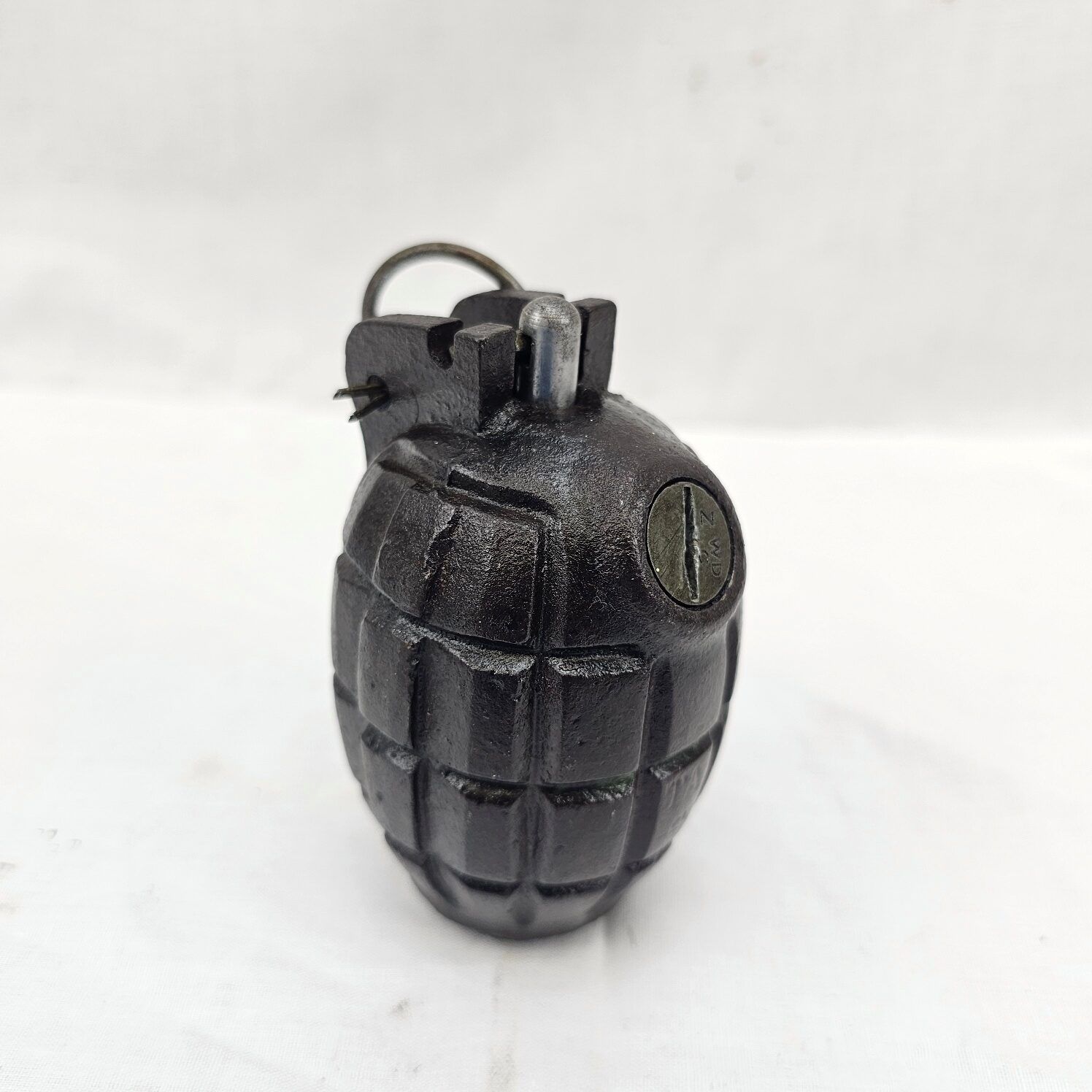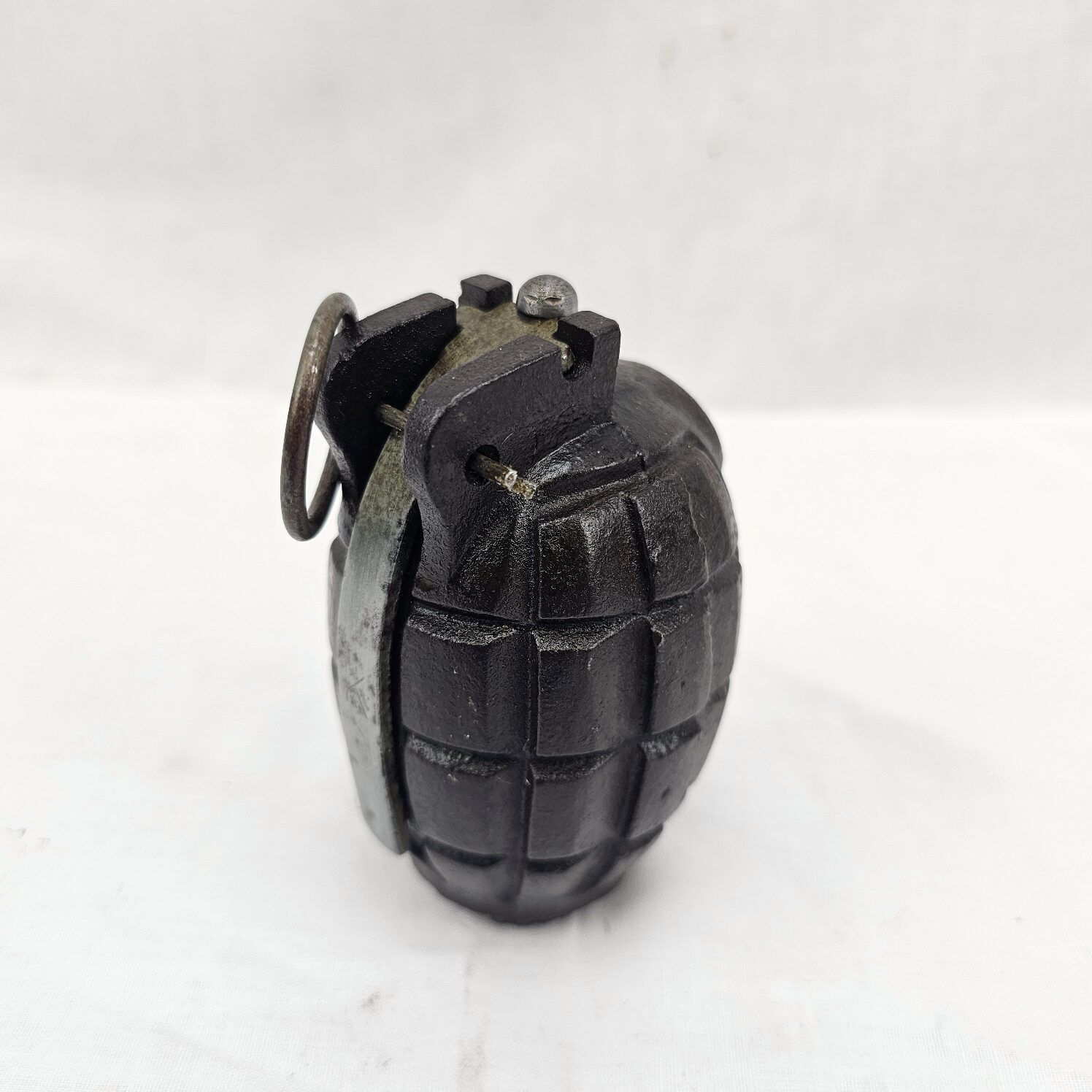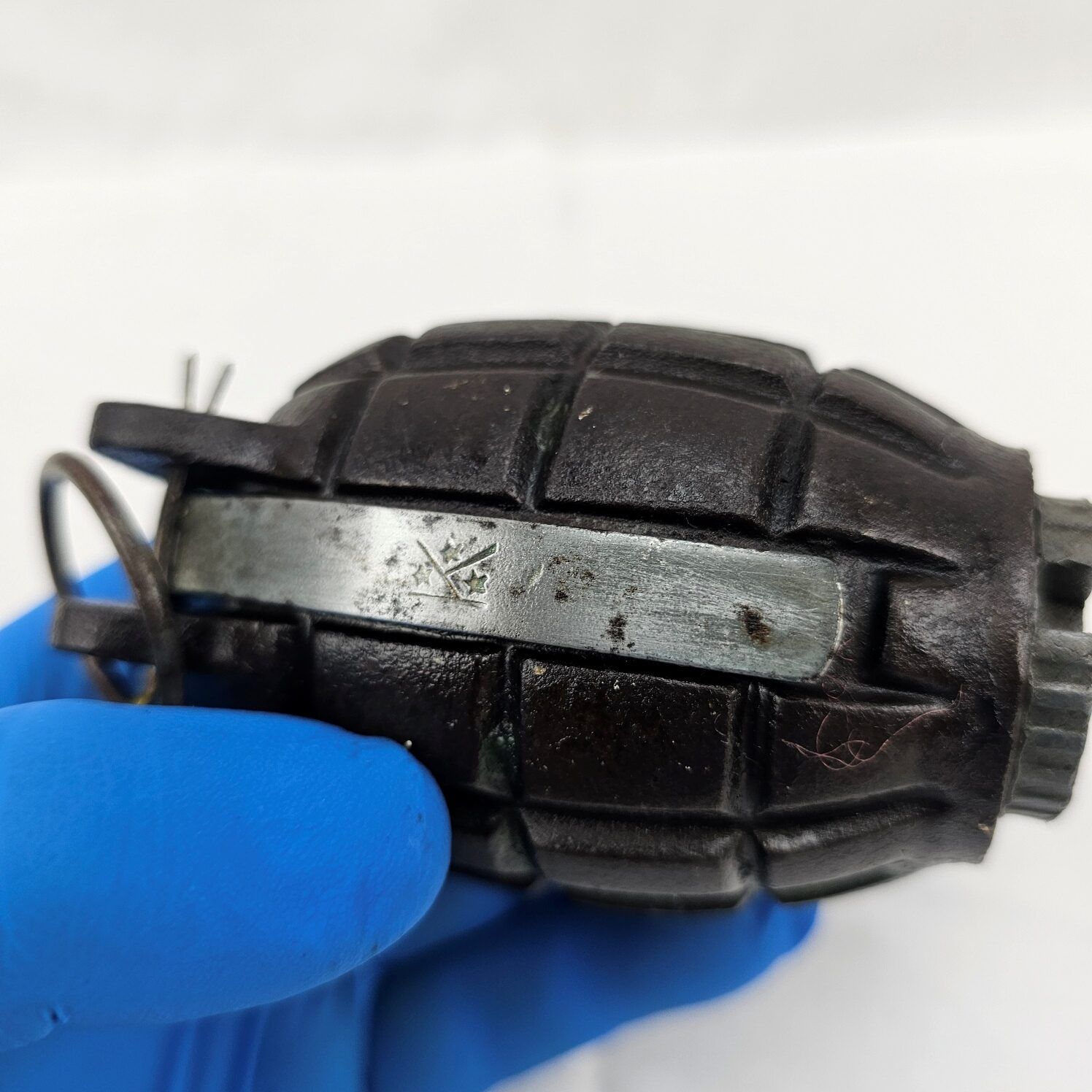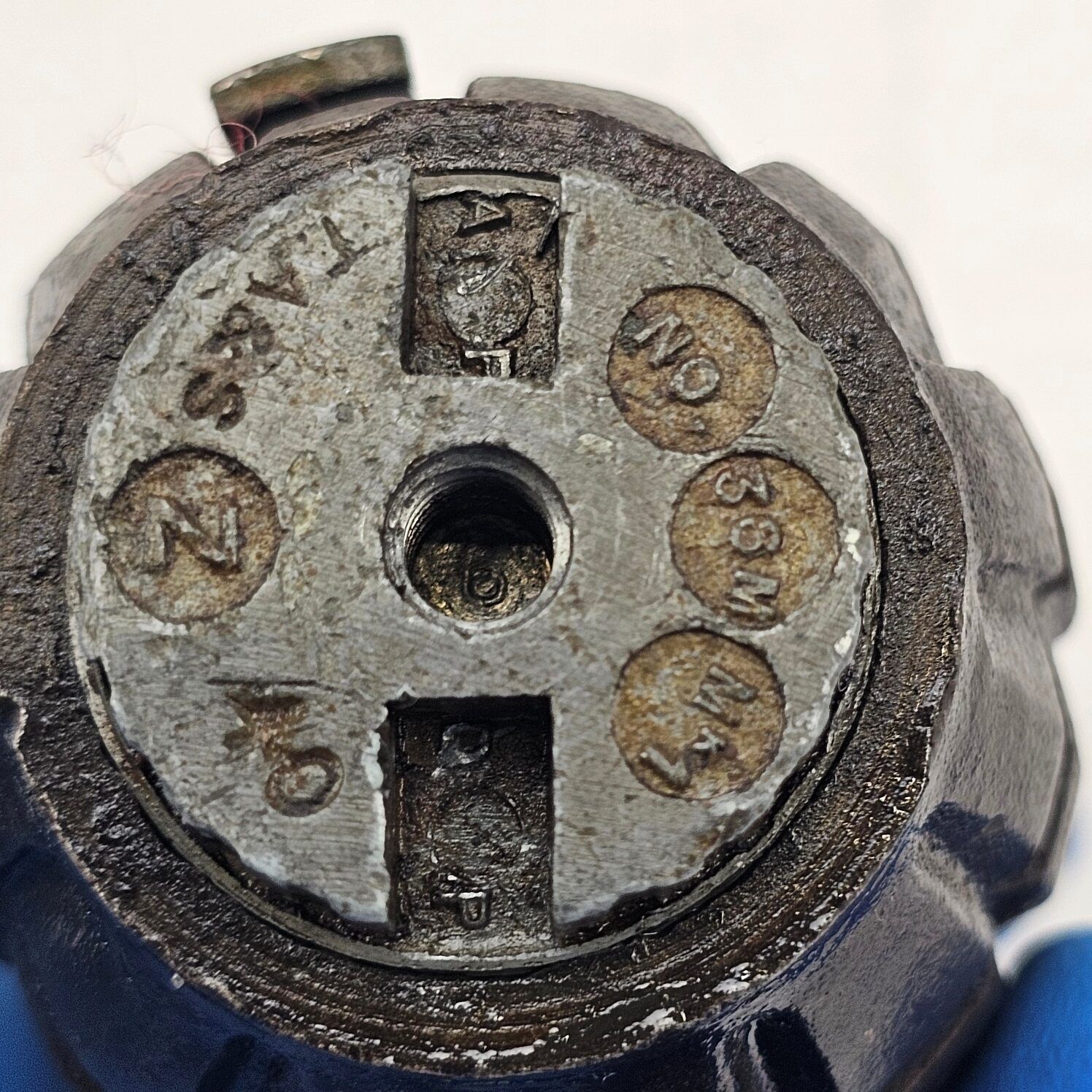~ 1940 Dated British No. 36 Mills Bomb Grenade – Inert ~
The British No. 36 Mills Bomb Grenade, commonly known as the “Mills Bomb,” is one of the most iconic and widely used grenades in military history. Here’s a detailed overview of its design, history, and usage:
Overview of the No. 36 Mills Bomb Grenade
History and Development:
Inventor: The Mills Bomb was invented by William Mills, a hand grenade design pioneer from Sunderland, England.
Introduction: It was first introduced to the British Army in 1915 during World War I.
Evolution: The No. 36 variant emerged in 1917, improving on previous models. It remained in service through World War II and beyond.
Design and Features:
Shape and Structure: The grenade has a distinctive segmented cast-iron body designed to enhance fragmentation. This pineapple-like design made it very effective as a fragmentation grenade.
Weight and Size: It typically weighs around 765 grams (1.7 pounds) and is about 95 mm (3.7 inches) tall without the fuze.
Filling: The explosive filling was usually amatol, but later versions could use TNT or other explosive materials.
Mechanism:
Fuze System: The Mills Bomb uses a time-delay fuze. When the safety pin is pulled, the striker lever (or spoon) is released, igniting the fuze.
Delay: The standard delay for the fuze is about 4-7 seconds, providing the thrower enough time to deploy the grenade safely.
Detonation: After the delay, the explosive charge detonates, causing the cast-iron body to fragment and produce shrapnel.
Usage in Combat:
World War I: The Mills Bomb was extensively used in the trench warfare of World War I. Its design allowed for it to be thrown effectively, even from trenches.
World War II: It saw widespread use again during World War II, proving to be reliable and effective in various combat scenarios.
Post-War: The grenade continued to be used post-WWII by British and Commonwealth forces, with some modifications over the years.
Identification:
Markings: The No. 36 Mills Bomb typically has manufacturer markings, and the year of production stamped onto the body. The base plug, which screws into the bottom, often contains additional information.
Color: Originally, these grenades were painted various colors for different purposes (e.g., green for live grenades, blue for training). The standard color for live grenades was typically a dark green or black.


